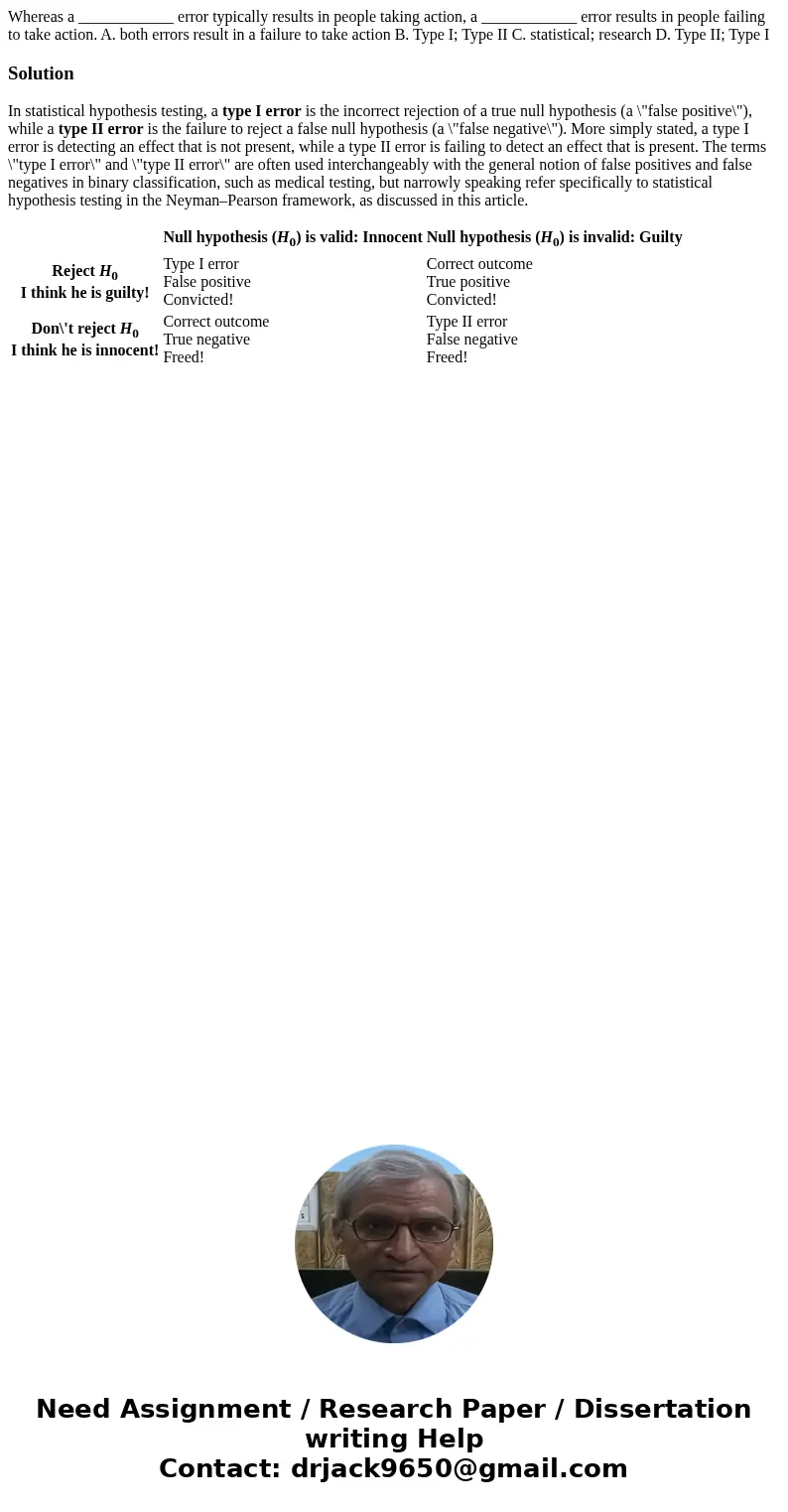Whereas a error typically results in people taking action a
Whereas a ____________ error typically results in people taking action, a ____________ error results in people failing to take action. A. both errors result in a failure to take action B. Type I; Type II C. statistical; research D. Type II; Type I
Solution
In statistical hypothesis testing, a type I error is the incorrect rejection of a true null hypothesis (a \"false positive\"), while a type II error is the failure to reject a false null hypothesis (a \"false negative\"). More simply stated, a type I error is detecting an effect that is not present, while a type II error is failing to detect an effect that is present. The terms \"type I error\" and \"type II error\" are often used interchangeably with the general notion of false positives and false negatives in binary classification, such as medical testing, but narrowly speaking refer specifically to statistical hypothesis testing in the Neyman–Pearson framework, as discussed in this article.
| Null hypothesis (H0) is valid: Innocent | Null hypothesis (H0) is invalid: Guilty | |
|---|---|---|
| Reject H0 I think he is guilty! | Type I error False positive Convicted! | Correct outcome True positive Convicted! |
| Don\'t reject H0 I think he is innocent! | Correct outcome True negative Freed! | Type II error False negative Freed! |

 Homework Sourse
Homework Sourse